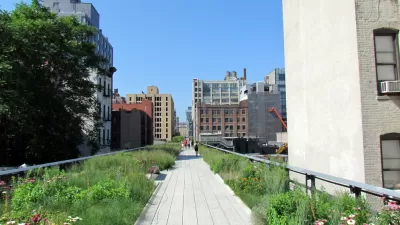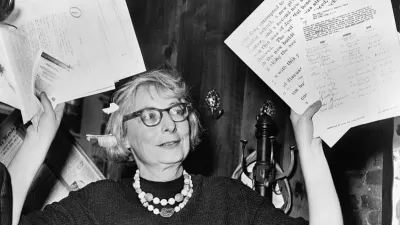Landscape Architecture is a field in the ascendency, writes Alan G. Brake. Its rise can be traced to the inability of Architects and Planners to engage with some of the most important challenges of our time.

"In recent years, landscape architects have seen their profile rise," explains Brake. "The discipline has gained stature in the public’s imagination, as well as among the allied disciplines of architecture, planning, and even civil and transportation engineering," owing to changes in federal and city policy, and the ability of landscape architects to redefine, and expand, the role of their field.
As much as the field's rise can be traced to the efforts of its practitioners, it also owes its ascendence to "weaknesses in contemporary architecture and planning" including a focus on architecture-as-object and planning's fear of engaging with design, argues Brake.
"Landscape architects are offering redemptive visions for neglected, damaged, and underutilized places. Environmental problems may seem overwhelming and insurmountable. But landscape architects offer solutions to improve our roofs, our blocks, our neighborhoods, a nearby waterway, or the city at large."
FULL STORY: Landscape Architecture's Ascendance

Manufactured Crisis: Losing the Nation’s Largest Source of Unsubsidized Affordable Housing
Manufactured housing communities have long been an affordable housing option for millions of people living in the U.S., but that affordability is disappearing rapidly. How did we get here?

Americans May Be Stuck — But Why?
Americans are moving a lot less than they once did, and that is a problem. While Yoni Applebaum, in his highly-publicized article Stuck, gets the reasons badly wrong, it's still important to ask: why are we moving so much less than before?

Using Old Oil and Gas Wells for Green Energy Storage
Penn State researchers have found that repurposing abandoned oil and gas wells for geothermal-assisted compressed-air energy storage can boost efficiency, reduce environmental risks, and support clean energy and job transitions.

Updating LA’s Tree Rules Could Bring More Shade to Underserved Neighborhoods
A new USC study finds that relaxing Los Angeles’ outdated tree planting guidelines could significantly expand urban tree canopy and reduce shade disparities in lower-income neighborhoods, though infrastructure investments are also needed.

California's Canal Solar Projects Aim to Conserve Resources and Expand Clean Energy
California’s Project Nexus has begun generating electricity from solar panels installed over irrigation canals, with researchers and state agencies exploring statewide expansion to conserve water and boost clean energy production.

HHS Staff Cuts Gut Energy Assistance Program
The full staff of a federal program that distributes heating and cooling assistance for low-income families was laid off, jeopardizing the program’s operations.
Urban Design for Planners 1: Software Tools
This six-course series explores essential urban design concepts using open source software and equips planners with the tools they need to participate fully in the urban design process.
Planning for Universal Design
Learn the tools for implementing Universal Design in planning regulations.
Heyer Gruel & Associates PA
City of Moreno Valley
Institute for Housing and Urban Development Studies (IHS)
City of Grandview
Harvard GSD Executive Education
Salt Lake City
NYU Wagner Graduate School of Public Service
City of Cambridge, Maryland



























